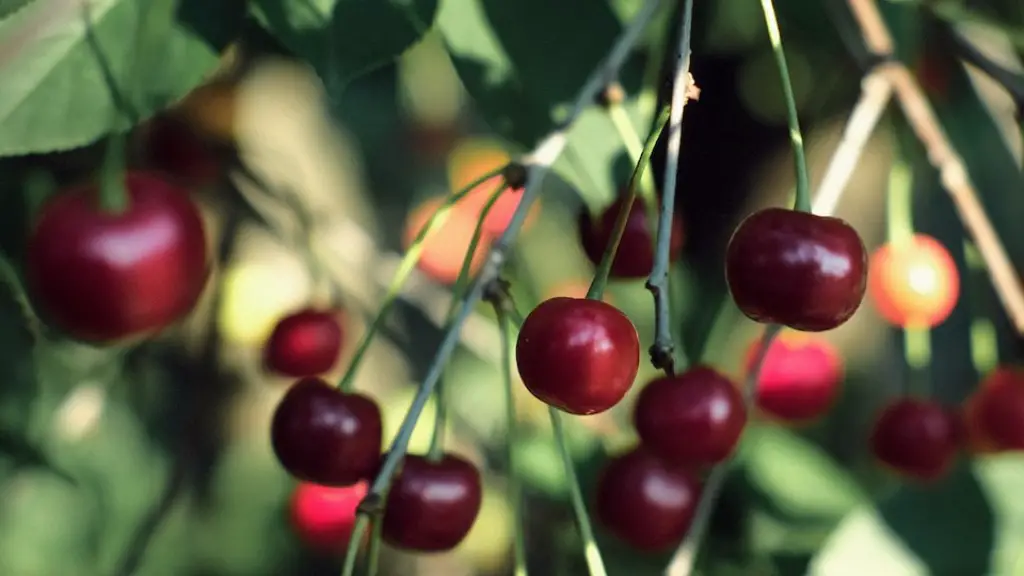If you’ve got an avocado pit sitting around your kitchen, you’ll be happy to know that it’s actually quite easy to grow a tree from it with proper care. Growing a tree from an avocado pit is a fun and rewarding experience that can be done in your own home. Here’s how you can grow an avocado tree from the pit of an avocado.
To begin, the first step is to prepare the avocado pit. Carefully cut the pit in half with a sharp knife, revealing the embryo inside. The membrane should be removed from the pit, leaving it a clean and smooth pit. To do this, you can gently scrape it off with your fingers or a spoon, but be sure not to damage the embryo.
Next, you’ll need to soak the pit. You can leave it in a bowl of cold water overnight to soften it, but be sure to change the water every few days to encourage root development. Once the pit is softened and beginning to sprout, you’ll want to place it in a pot filled with potting soil. An ideal pot, according to experts, is one that is 7-9 inches deep and large enough to hold at least 6 inches of soil. Place the pit into the soil so that the embryonic side is facing upwards.
Water the soil, making sure to keep it moist but not overly wet. You should place the pot in a bright, warm area, such as near a window. It should receive indirect sunlight, as direct sunlight can burn the leaves. You can expect to see the seedling emerge after three to six weeks.
Monitor the seedling as it grows and water it regularly. Once the leaves appear, it will benefit from additional nutrients, such as a liquid fertilizer formulated for trees. As the tree continues to grow, you can “top-dress” the pot with additional soil. Repotting into a larger pot as the tree outgrows its initial pot will also encourage further growth. You may also want to consider pruning the leaves for a better shape.
It’s important to keep the tree in the same temperature range that you would keep an avocado plant indoors. Avoid keeping it in temperatures that are less than 40 degrees or more than 85 degrees. Even if you don’t see any growth during the winter months, the tree should still be alive and will likely burst into bloom come spring.
With patience and proper care, you can successfully grow a tree from an avocado pit. It’s a fun and rewarding project that will reap its rewards in no time. Now enjoy the fruits of your labor with a home-grown tree right in your kitchen!
Pruning Techniques for an Avocado Tree
Pruning an avocado tree is an important task that helps promote a healthy and strong tree. When pruning an avocado tree, it’s important to take a few steps that will ensure the tree receives the best care and the highest yield of avocado fruit. One of the first steps to pruning an avocado tree is to identify the oldest wood on the tree, which can be done by looking at the twigs. The oldest twigs that are not carrying fruit should be removed in order to allow new buds to be created and form.
When pruning an avocado tree, it’s important to remove any weak or dead twigs in order to allow healthy twigs to grow. The removal of dead or weak twigs helps promote fresh growth and also prevent diseases from spreading. Pruning can also be done to help control the size and shape of the tree, and the removal of sucker growth will also help prevent overcrowding of the tree.
Experts also suggest pruning in the winter or spring in order to ensure the best results. During the winter, the pruning should be done before the tree begins to show new growth in the spring. When pruning in the spring, it’s important to prune right after the tree has bloomed in order to encourage new growth.
When pruning an avocado tree, it’s important to use sharp and clean gardening shears in order to get the best results. It’s also important to wear protective eyewear when pruning, as the flying pieces of wood can cause injury. When done correctly, pruning can help keep an avocado tree healthy and strong, and it’s an important part of any avocado tree’s maintenance.
Harvesting Avocados from a Tree
Harvesting avocados from a tree can be an exciting and rewarding endeavor. The key to harvesting an avocado from a tree properly is to not rush the process. There are a few signs to look for in order to determine when your avocado is ready to be picked.
For the best-tasting avocado, experts suggest to wait until the fruit is plump and has reached a deep green color on the skin. Additionally, when you squeeze the avocado, it should have a slight give to it. If it’s too hard, it’s likely not ready to be harvested. If the avocado is too soft and squishy, it means that it’s likely overripe.
Once you’ve identified the right avocado to pick, you should use a ladder to assist with the harvesting if you need one. When using ladders, take the appropriate safety precautions by having someone to spot you or by using the proper equipment. Using the right tools and taking the appropriate safety measures when harvesting from a tree is of the utmost importance.
When you’ve identified the specific avocado or avocados that you want to pick, it’s time to do the harvesting. Gently twist the avocado off the stem, as yanking or pulling can damage the tree and decrease the yield for the remaining season. Hold the avocado in the palm of your hand and twist in a clockwise motion until it comes off with a little bit of stem attached.
Harvesting avocados from a tree is an exciting experience, and one of the best parts of owning an avocado tree. When done correctly, it can be done without damaging the tree and can provide a steady yield of avocados.
Propagating Avocado Trees
Avocado trees are an especially interesting type of tree that can be propagated by a few unique methods. Most commonly, it can be done through air layering or seed propagation.
Air layering is the process of growing a new tree from the twigs of the existing tree. It is done by peeling off a section of bark near the end of a branch and then wrapping a piece of moss around that spot to retain moisture. The moss should be tucked in and kept moist until the section of the twig begins to grow roots. Once the roots have developed, the twig can be cut from the parent tree and planted.
The seed propagation method is slightly less difficult and involves planting the pit from an avocado directly into soil. This is done the same way a bean seed would be planted. After planting, the pit should be kept moist until it eventually develops a sprout. As the plant develops it should be moved to a larger pot and given more adequate nutrition to develop stronger roots and more leaves.
Avocado trees can also be propagated through grafting, a process in which desirable traits are taken from one tree and transplanted onto another tree. Grafting is a difficult process that is best done with the help of an arborist or someone familiar with trees.
Propagating an avocado tree is an exciting process that can help expand the life of an existing tree. Whether it’s done through seed propagation, air layering or grafting, propagating an avocado tree can add value in a variety of ways and help ensure that the tree is around for years to come.
Feeding an Avocado Tree
If you have an avocado tree, you’ll want to make sure that you’re providing it with the right amount of nutrition. Proper feeding is important to make sure that the tree is healthy, strong and capable of producing a large yield of delicious avocados.
The best way to make sure that your avocado tree is getting the nutrients it needs is to use a liquid fertilizer specifically designed for trees. This fertilizer should be applied every other week when the growing season is active and every six weeks when the tree is not actively growing. The amount of fertilizer used will vary depending on the size of the tree, so it’s important to consult an arborist or a gardening expert for the exact amount of fertilizer for your tree’s size.
In addition to the liquid fertilizer, it’s important to also consider soil nutrition. Compost or composted manure should be added to the soil to promote healthy growth. If you don’t have access to compost, you can also use a water-soluble fertilizer specific to avocado trees. The soil should be tested regularly with a soil test kit in order to ensure that the tree is getting the right amount of nutrients and to identify any issues in the soil.
Avocado trees need the right amount of nutrition in order to remain healthy and to produce a large yield of avocados. With the right combination of fertilizer, compost and soil testing, you can make sure that your tree is getting the nutrition it needs!




